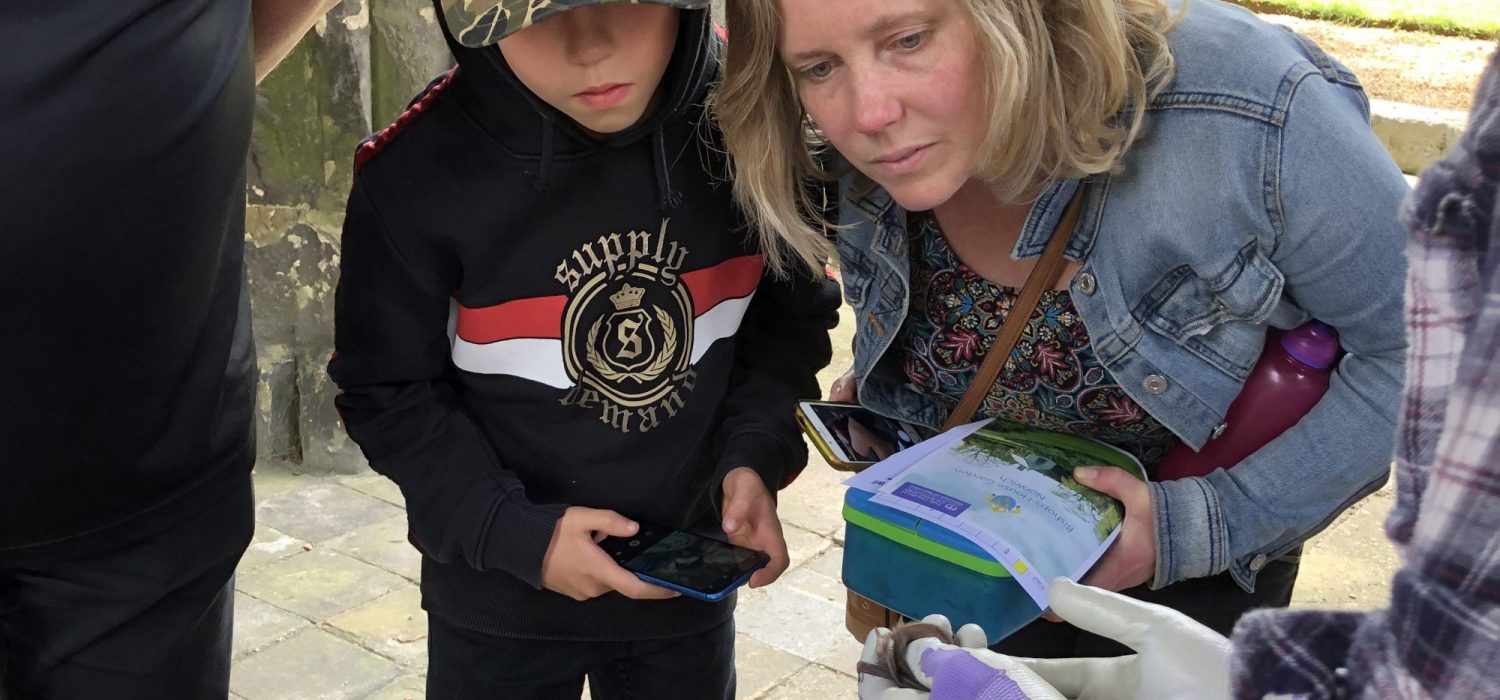HIGHLIGHTS FROM THE 2022 NATIONAL BAT CONFERENCE – by Catherine Dew
The last time I attended the Bat Conference was pre Covid in 2019. This year’s conference didn’t disappoint. This year the BCT kindly sponsored my place through the Norfolk and Norwich Bat Group.
On Friday night there was an optional screening of ‘the Bat Man of Mexico’ accompanied by the man himself who answered questions after.
Saturday’s Conference began with a talk by the Bat Man of Mexico himself, Dr Rodrigo A Medellín.
Saturday morning was spent looking at bats from Mexico of bats including the wolly false vampire bat Chrotopterus auritus and the Spectral Bat Vampyrum spectrum, and their Mayan temples roosts and diet, and the Nectar Bats that live in Mexico City.
Rodrigo’s talk was followed by an ‘Update on the work of the Bat Conservation Trust’ by Kit Stoner (Chief Executive). Kit spoke about the latest National Bat Monitoring Program NBMP results and how they are now looking at possible regional variances in trends.
Unfortunately, due to sound issues with microphones most of the ‘Panel discussion on autumn swarming sites and their protection’ was inaudible. But thankfully Morgan Hughes’ acceptance speech for the Pete Guest Award was loud and clear. Morgan spoke about the dedication of bat workers and how it was fundamentally important to look after our mental health (Morgan’s acceptance speech will be published in the minutes of the Bat Worker’s Forum but a link is not available at the moment but will may be found here in due course.
Dr Charlotte (Lotty) Packman gave an all too brief presentation about the Barbastelles and the ‘super colony and the road’.
Sunday’s conference started with a presentation about ‘Earned Recognition: a New approach to Bat Licensing’ by Phil Bowater and Lucy Bellini from Natural England. Again, technical issues reared their head but Lucy provided a summary of the last 18-month pilot and what the ‘beta phase’ will look like from Spring 2023. But initial results show that ER is 2-5 times faster for Natural England to process than the current EPS licence and at least twice as fast for consultants to prepare and submit licences but they noted that challenges remain around the ambitions timescales, IT systems and Natural England’s capacity and shifting priorities.
There was an eagerly awaited update on the next iteration of the Bat Survey Guidelines but sadly no date was given for publication as is still needs to go through the technical review board (the 3rd iteration was published 6 years ago). A draft was published for consultation in Spring 2020 which resulted in some 600 comments from bat workers which Jan Collins (the editor) has been working through. She did however reveal that the following changes have been made:
- More advice on bio-security to minimise transmission (bat to bat, bat to person, person to bat)
- Tree surveys (and what we miss with ground level surveys) and how they are categorised, and how you can remove surveyor subjectivity. All trees considered as part of a roosting resource and how this is quantified
- Bat Tree Habitat Key can be used as a predictive tool and the fourth edition will signpost this work
- Emphasis towards climbing surveys, and use of night vision aids (essential).
- Licensing policy 4 and advanced bat surveys used on major infrastructure projects
- Use of night vision aids – shifts emphasis to standard protocol (night vision aids should be used on all surveys and justified if they are not used). (Richard Crompton is still working on guidance for use of night vision aids).
Debate remains around:
- recommendations on the number of bat surveys to show absence following publication of ‘Evaluating survey methods for bat roost detection in ecological impact assessment’
- Transect surveys, and
- Swarming surveys
Finally, Jan noted that a working group has been set up for large scale maintenance projects (100s of houses being repaired at once) – further information to be published at some point.
Paola Reason, RSK Biocensus spoke about the Bat Mitigation Guidelines which should be published early 2023 (the beta version published in 2021 received over 2000 comments which have been entered into a spreadsheet (which will be published) so you can see how the comments have been responded to). The mitigation guidelines will:
- Extends scope of 2004 guidance
- Include method of valuing bat populations and habitat
- Include guidance on bat and noise (but this area lacks research),
- signpost additional guidance (lots and lots of references for CPD), and
- Provide guidance on proportionality of bat mitigation – based on geographical scale of value, roost status, and monitoring
They are also looking at temporary flight lines – how will you test effectiveness, what does success look like, what does remedial action look like
Paola also mentioned some project opportunities for collaboration around the impacts of anthropogenic noise on bats – experimental studies to identify thresholds and inform industry guidelines. There is also a PhD opportunity with UEW and BioCensus. They are currently looking for research sites where bats roost where there are high levels of noise and research candidates.
BCTs Night Watch Project
The BCT spoke about their new community science project where volunteers can borrow an Audiomoth to record bat activity over one night, and spend an hour listening to night time sounds.
The project was piloted in 2021 with the aim of engaging with people without experience in urban environments. The idea is to produce robust biological data for local scale conservation and development planning. So far the project has had a London focus but in 2023 they want to branch out and work with bat groups. Email nightwatch@bats.org.uk
Liz Walsh from the Jersey Bat Group is on the look out for people who can radio tag and track bats for their Kuhl’s pipistrelle project and Laura Torrent ‘s presentation looked bat conservation Equatorial Guinea (or lack of), and how museum specimens and a lot of field work has increased the number of identified species from 22 in the 1970s, to more than 50.
Dr Amanda Adams – Bat Conservation International’s mission to end bat extinction worldwide (more information is available here https://www.batcon.org/wp-content/uploads/2020/10/BCI_Strategic_Plan_2020_2025_web.pdf
She mentioned the Jamaican flower bat Phyllonycteris aphylla, and the Jamaican funnel -eared bat both of which only have one known roost. She also noted the impact of cats on the Jamaican Flower bat by cats – one of which caught a minimum of 14 bats in a week.

Jamaican Flower bat
Other highlights included:
- Sussex Bat Group’s video about their Greater horseshoe bat roost which they are currently raising funds to restore the building.
- Oli Aylen’s a global survey on acoustic bat lures which highlighted ethical concerns and the need for standardised methods (also see Effectiveness of acoustic lures for increasing tropical forest understory bat captures). You can follow him @Olizoology on Instagram.
NORWICH BAT GROUP RENAMED NORFOLK & NORWICH BAT GROUP! – 7th March 2022
As part of the recent AGM in December 2021, the decision to change the group name was voted unanimously.

The Norwich Bat Group (NBG) was founded in 2007 to educate the residents of Norwich about local bats, as well as acting directly to protect and conserve the ten or so species that have been found in and around the Fine city. In recent years, NBG has widened the scope of its work in response to enquiries and requests from the public from all parts of Norfolk.
The group is also participating in county-wide research projects, including the National Nathusius’ pipistrelle project, and migration research undertaken with partners in the Netherlands.
There is currently no active county bat group affiliated to The Bat Conservation Trust, so after much discussion and consideration, the decision was taken to ask Norwich members whether the name of the group should be changed, and the vote was in the positive. The Norfolk and Norwich Bat Group will work to widen the influence and interest of members.
With a change of name, the group needs a change of logo! Our current logo shows two bats and the iconic Norwich cathedral. We would like to offer the chance of redesigning our logo to any Bat Group supporters and we’d love to see any efforts from younger bat fans too!
The logo must include the words ‘Norfolk & Norwich Bat Group’ and an image to encompass our new name, and a bat or two of course! Something simple and eye-catching. It could be colour or black and white, but large enough for us to print if we need to. If drawn digitally a resolution of 2000 x 1200 should be about right. The group committee will choose the final winner, who will see their logo on our website, social media and perhaps even merchandise! One adult and one child will be chosen and each will win a year’s BCT membership.
Competition closes 31st March 2022, please email entries with your name, age and email address to norwichbatgroup[at]gmail.com
NATHUSIUS’ PIPISTRELLE CROSSES THE NORTH SEA IN ONE NIGHT – 2nd June 2021
During the night of Sunday 2 to Monday 3 May, a Nathusius’ pipistrelle flew from Minsmere in England directly to Wijk aan Zee (Netherlands). This is the first detection of such a crossing from England to the Netherlands through the telemetry study of the migration of Nathusius’ pipistrelles. The bat, an adult female, was tagged on 29 March 2021 by the Norwich Bat Group. For more information see https://www.wur.nl/en/news-wur/Show/Nathusius-pipistrelle-crosses-the-North-Sea-in-one-night.htm
After hearing the news of this intrepid bats’ flight, we decided she deserved a proper name! From the suggestions put forward by the committee, Lady Minsmere was chosen by bat fans on our social media. A fitting name for a plucky pipistrelle!
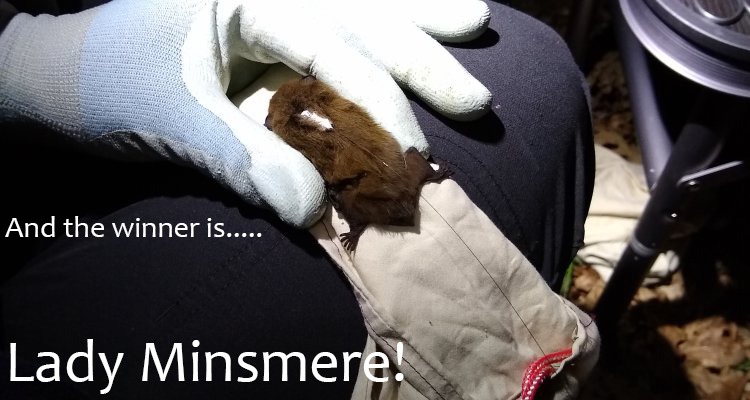
ART COMPETITION – DEADLINE 12th October 2020!
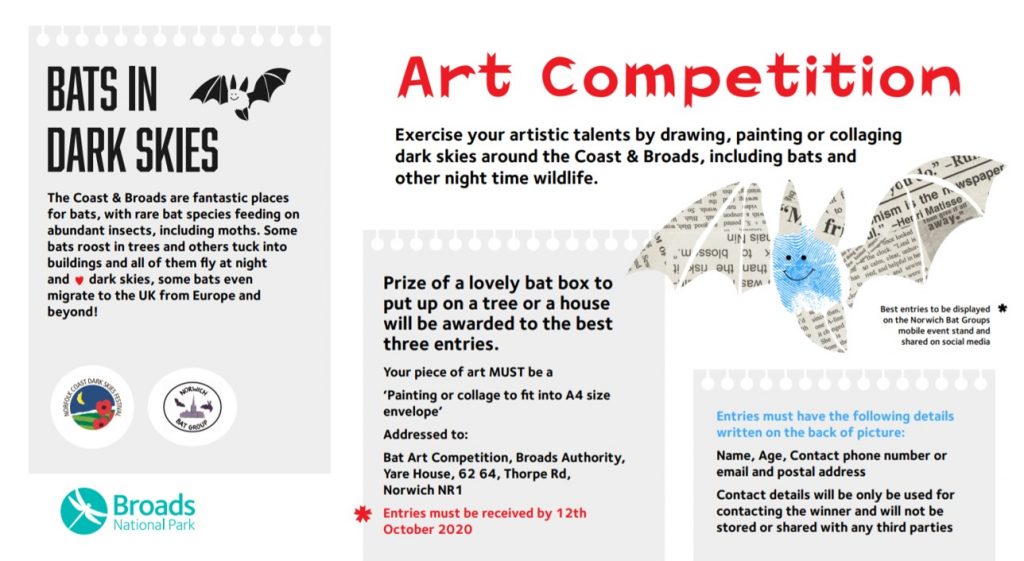
BAT CARER’S BLOG 2-13 July 2020
Well, it has been another busy two weeks with Norfolk’s bats. We’re now up to nearly 25 pups, and whilst most are now down to four-five hourly feeds, we are still getting the occasional very young pups in as well as juveniles which are ready to start learning to fly. Most of the babies being found are common and soprano pipistrelles, but we’ve also had one brown long-eared bat and one juvenile serotine, which is an unusual find for us. A couple of babies have been very happily reunited with their mums. Sometimes the adults fly up and get the baby very quickly, but other times swarming around the baby can happen for several minutes.

The little one above was about 3-4 days old when it was found on the floor outside a home and mites covered its entire body. We attempted to reunite the bat with its mother but there was very little bat activity and no interest shown at all in the baby, so we’re theorising that the roost had relocated to another building due to the build up in parasites. It must be very uncomfortable for the bats, so we use a type of cellotape to remove the mites and, if the bat is old and strong enough, sometimes a tiny amount of cat flea repellent. It’s not just the baby bats getting into trouble. We are still getting adults brought into care including some unusual cases this week, such as an adult male Natterer’s bat who was fished out of a river and fed on cat food for four days before help could be found and a serotine found in a wheelie bin.
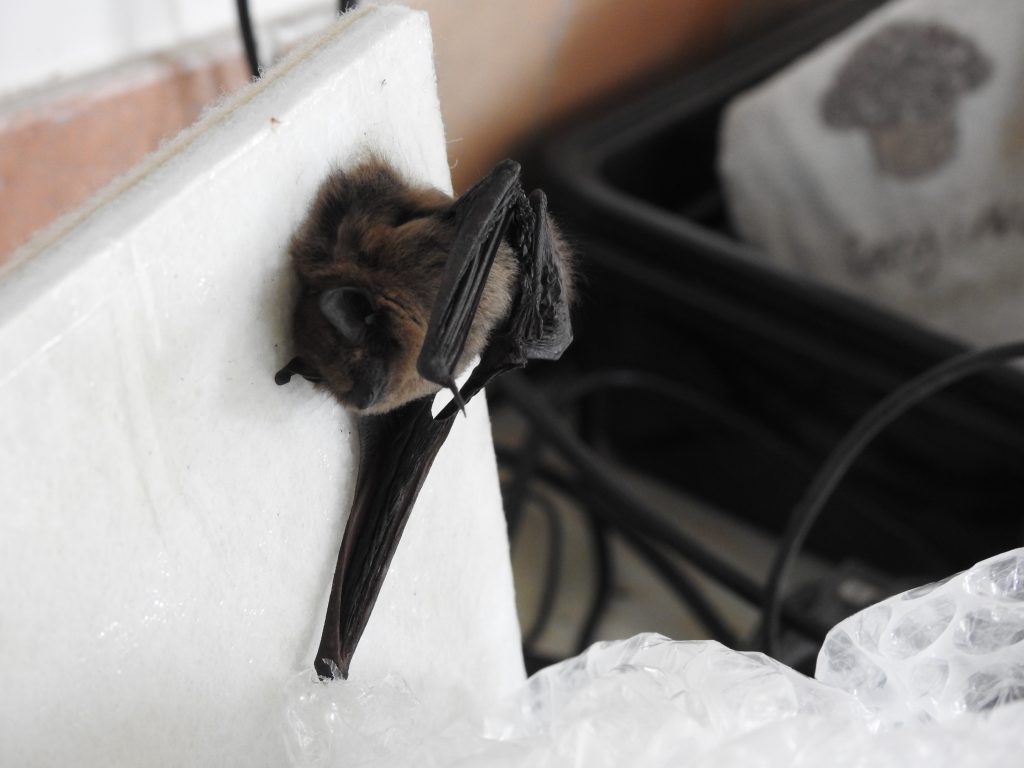
We’ve also had another pipistrelle stuck to flypaper. Sticky flypaper can be disastrous for bats, who can get stuck and then die slowly and painfully from starvation and dehydration so we always ask to please, please avoid hanging sticky flypaper and glue traps in areas bats can access, particularly in lofts and if you do find a bat stuck to such a trap, don’t try to free it yourself but seek professional help as soon as you can. Thankfully, the little guy below was successfully freed, bathed in a solution to dissolve the glue, and then washed thoroughly.
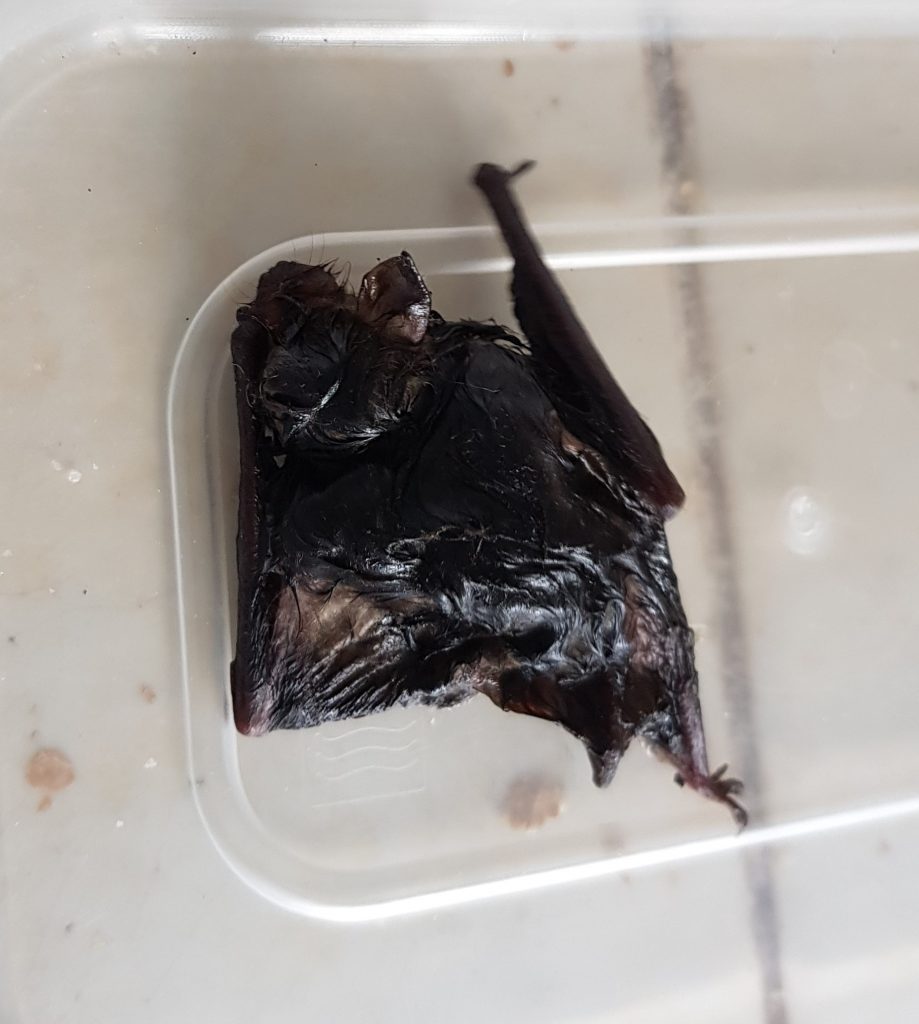
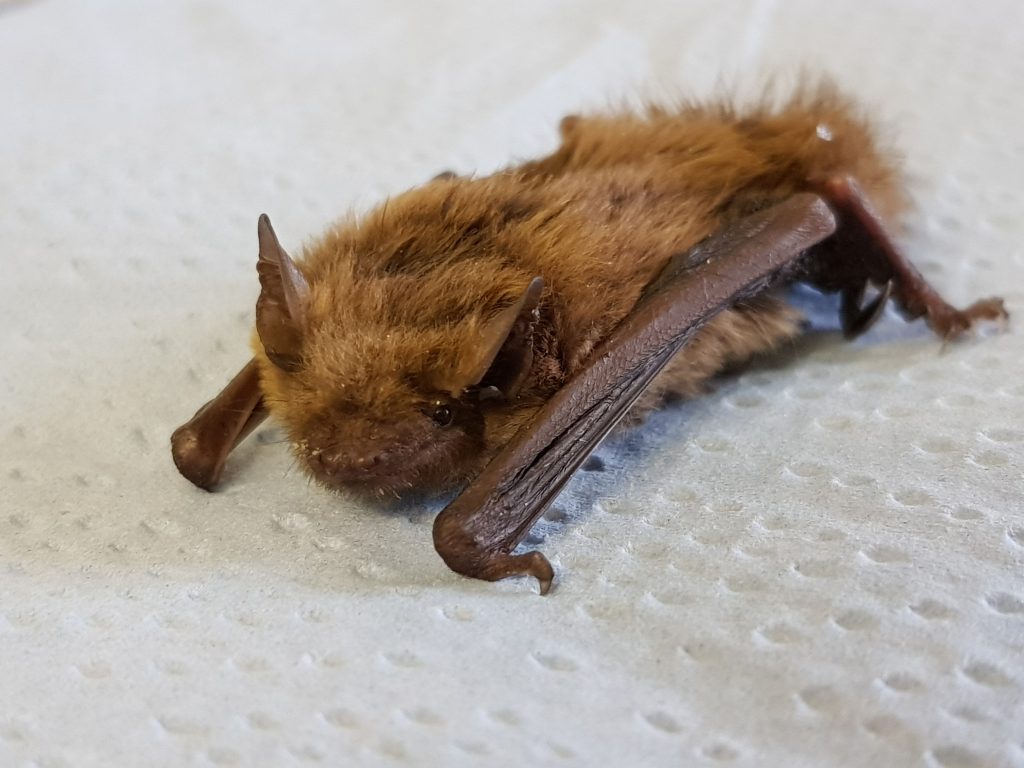
BAT CARER’S BLOG 21-28 June 2020
“Hello, I’ve been given your number by the Bat Conservation Trust’s helpline. I have found a baby bat and I don’t know what to do. Can you help?”
It’s Sunday 21 June and Norfolk’s bat carers have been waiting for this call for the last week or so, having heard of baby bats being found in other counties since early June. With our maternity roosts seemingly a little behind this year, we’ve been given a welcome chance to treat and clear as many rehabilitated bats out of the flight cage as possible to make space for what is always a very busy few months. Baby bats, called pups, are born furless and blind. They often wander when left unattended by their mothers, sometimes falling through small gaps in buildings and ending up getting separated from the rest of the roost. Whilst we try to reunite the pups with their mums, who often respond to the calls of the baby bat as they leave the roost at night, sometimes this is just not possible. In these instances, the baby is taken into care and hand reared until it can be released back into the wild. Hand rearing is extremely labour intensive. The pups need to be kept warm at all times to help digest food and promote growth, and in the very early stages need to be fed every three hours. We feed them Babydog powdered milk for puppies, or goats milk in an emergency, as these have been found to most closely mimic their mothers milk. Little and often is the key, alongside regular water, to prevent their tummies becoming bloated and blocked.
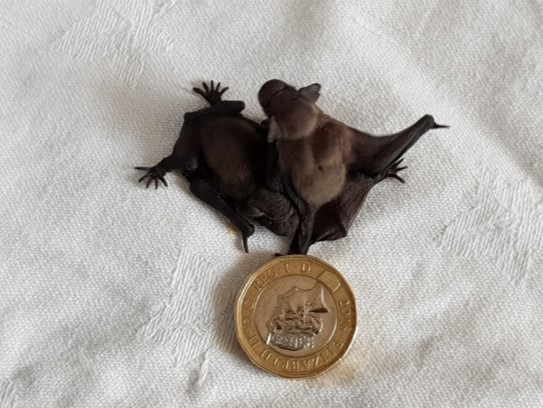
Copyright J. Harris.
As of Sunday 28 June we have five pups, all pipistrelles. A sixth was reported but was found so starved that it couldn’t be encouraged to eat and it sadly died soon after being collected.
Getting baby bats help quickly is key to their survival. If you find a bat in the daytime, baby or adult, please call the Bat Conservation Trust’s helpline on 0345 1300 228 who will be able to put you in touch with a local bat carer.
Broads Authority takes steps to secure the future of rare bat species
The Broads Authority has invested in 30 Schwegler bat boxes which will provide roosting places for the uncommon bat species, Nathusius’ pipistrelle (4th February 2019).

Rare bats discovered at Whitlingham Country park – Eastern Daily Press, 28th Nov 2017
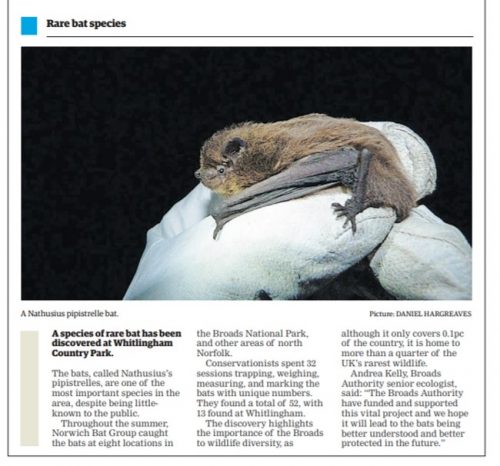
A rare bat species, known as the Nathusius’ pipistrelle, has been discovered at Whitlingham Country Park. The results of surveys carried out by Norwich Bat Group showed the site to be one of the most important in The Broads for this uncommon and little-known bat species.
2017 is the first year that Norwich Bat Group has joined the National Nathusius’ Pipistrelle Project run by The Bat Conservation Trust. The project has already revealed important information about this species by trapping and ringing to identify individuals. It has been discovered that, as well as being a resident species in the UK, Nathusius’ pipistrelle also migrates between north east European countries such as Latvia and Lithuania and the UK.
The bats migrate south during the autumn months to escape the harsh winters and return in the spring, crossing the North Sea on their journey to and from Europe.
This summer, Norwich Bat Group trapped and ringed Nathusius’ pipistrelle at eight separate locations across the Broads National Park and two other sites in North Norfolk. The trapping methods do not harm the bats and they are released immediately after confirming identify, weighing, measuring and ringing with a unique ring number. A total of thirty two trapping sessions have been carried out by twenty two dedicated volunteers and fifty two Nathusius’ pipistrelles have been ringed in The Broads, thirteen at Whitlingham. Essex and Bedfordshire Bat Groups joined Norwich Bat Group to help on two evenings .
The numbers of this rare bat discovered in the Broads, and particularly at Whitlingham, supports the staggering Broads National Park statistic that although they only cover 0.1% of the country, they are responsible for more than a quarter of its rarest and most significant wildlife.
Each year, Norwich Bat Group and other bat groups around the country will be sending their results to the National Nathusius’ Pipistrelle Project. The combined data will develop a more comprehensive understanding of this enigmatic migratory bat which is needed for the long-term conservation of populations of this species.
Andrea Kelly, the Broads Authority’s Senior Ecologist said of the project,
“The Broads Authority have funded and supported this vital project and we hope it will lead to the Nathusius’ pipistrelle being better understood and therefore better protected in the future.”
Notes for the Editors:
- The Broads Authority
The Broads Authority has the important job of looking after the Broads and the interests of the people who live, work and visit there. The Broads Authority has two purposes identical to the other national park family members relating to conservation and promoting people’s understanding and enjoyment of the special qualities of the area. It also has a third purpose to look after the waterways for navigation. In addition, it is a planning authority and has a duty to foster the economic and social well-being of its communities.
- Norwich Bat Group
The Norwich Bat Group was formed in 2007 and works to help protect, conserve and raise the awareness of bats in Norwich and the surrounding area. Of the approximately 17 resident species of bat found in Britain, at least ten species have been recorded in and around Norwich. Promoting awareness of bats to the general public includes leading guided bat activity walks, training volunteers for the National Bat Monitoring Program and participating in wildlife events. Protecting and conserving bats also includes finding new roosts, gathering new records of bats and monitoring known bat roosts and feeding areas. The group is affiliated to the Bat Conservation Trust, the national voice for bats in Britain.
- The National Nathusius’ Pipistrelle Project
The National Nathusius’ Pipistrelle Project was launched in 2014 with a grant from the People’s Trust for Endangered Species, to improve our understanding of the ecology, current status and conservation threats for Nathusius’ pipistrelles in Great Britain.
The aims of the project are to:
- Determine the resident and breeding status of Nathusius’ pipistrelle in Great Britain.
- Determine the migratory origins of Nathusius’ pipistrelles in Great Britain.
www.bats.org.uk/pages/national_nathusius_pipistrelle_project.html
